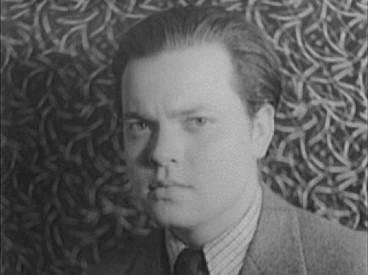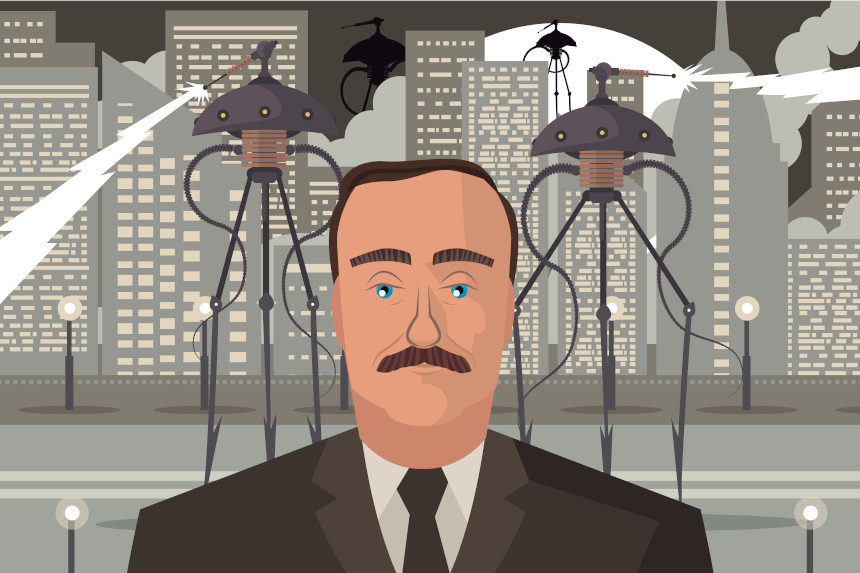Orson Welles remains one of the greatest directors in the history of cinema. He was also the primary driver behind one of the greatest panics ever caused by a radio broadcast. On October 30, 1938, The Mercury Theatre on the Air radio program aired its adaptation of H.G. Wells’ War of the Worlds. Presented in an innovative news-broadcast style, the segment inadvertently created mass hysteria.

The Saturday Evening Post’s archivist Jeff Nilsson has written about Welles’ great stunt on two previous occasions. In “The Genius Who Launched the Martian Invasion,” we get a look at the education and formation of Welles as a person and a personality. And “Are We Ready for Another Martian Invasion?” examines the wider panic caused by the production and asks why the American public seemed so susceptible to fear of an alien incursion.

Whatever the reasons, the fact remains that panic gripped the populace that October night when Welles and his accomplices delivered a fake news broadcast that convinced people that Martians had in fact landed in Grover’s Mill, New Jersey. According to the book The Invasion from Mars: A Study in the Psychology of Panic: with the Complete Script of the Famous Orson Welles Broadcast by Hadley Cantril, Hazel Gaudet, and Herta Herzog, approximately 1.7 million of the six million listeners that evening actually believed that an invasion was underway. The broadcast achieved the effect by employing a straight-faced style; they would present plot elements as breaking news, then shift away from moments of high-tension reporting into intentionally uncomfortable long stretches of music.
The complete War of the Worlds broadcast, remastered in 2011.
By the end of the hour-long show, police had arrived at the CBS Studios in New York to try to shut the program down. Welles would add a second disclaimer (one had aired at the beginning of the program) that the broadcast was a radio drama, but the effect had been achieved. Multiple contemporary accounts indicate that there was less “panic in the streets” that subsequent reporting made it out to be; nevertheless, Welles issued a public apology on October 31st. More than 12,000 newspaper and magazine articles were written about the event in its immediate wake.
Orson Welles and H.G. Wells had a discussion on KTSA in 1940.
Two years later, Welles and Wells would meet and speak on KTSA in San Antonio. They discussed the effectiveness of the program, and Orson Welles lamented that none other than Adolph Hitler had used the broadcast of an example of manipulating the public. H.G. Wells, for his part, noted that false invasion reports were not as easy to swallow in Europe with the looming specter of the Axis. On the brighter side, Wells asked Welles about the then-new film he was making. Welles gave him the name and even spelled it for him. It was a piece called Citizen Kane, clearly demonstrating that Orson Welles had many more tricks up his sleeves.

The War of the Worlds broadcast is still considered by many to be one of the greatest pranks ever pulled. Welles happily related the story throughout his life to build on his showbiz legend. Even in the immediate aftermath, as Welles took the microphone at the end of the broadcast to reassure the public that what they’d just heard was, in fact, a drama, he still had a wicked turn of humor, saying, “We annihilated the world before your very ears and utterly destroyed the CBS. You will be relieved, I hope, to learn that we didn’t mean it and that both institutions are still open for business.” He ended with, most appropriately, “That was no Martian; it’s Halloween.”
Featured image: Shutterstock.com
Become a Saturday Evening Post member and enjoy unlimited access. Subscribe now



